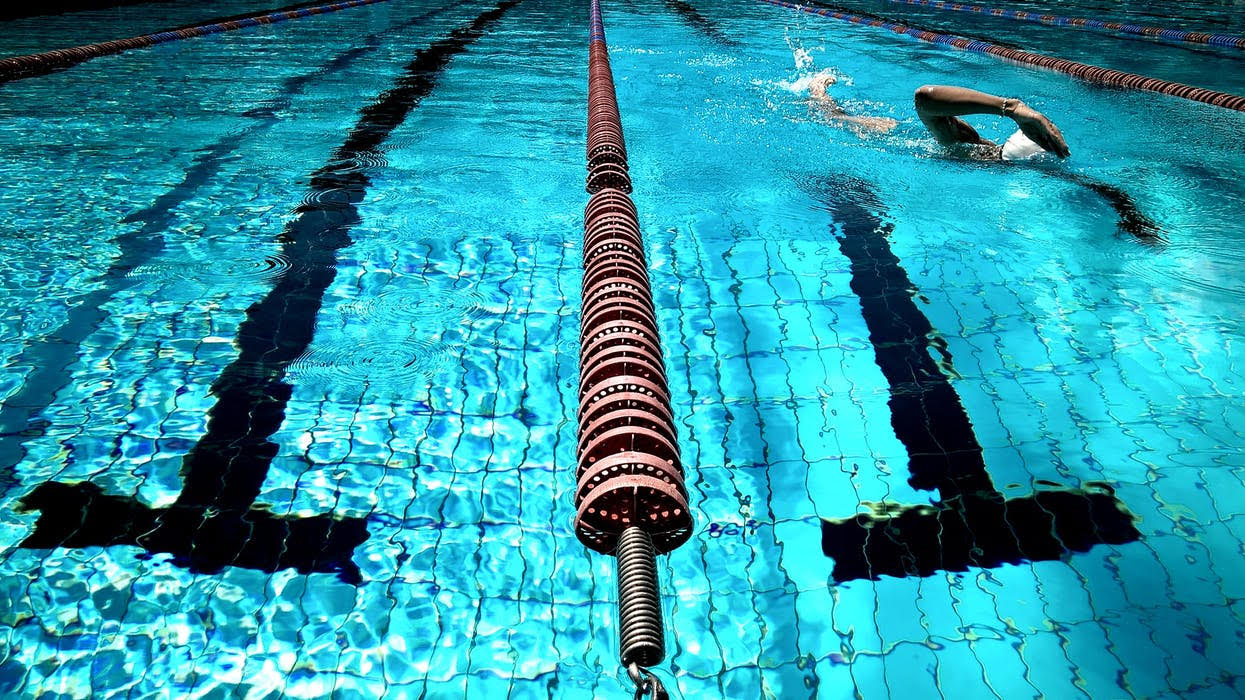With all the rain pouring down of parts of Australia right now, you might think you’re being taunted with the mention of swimming and running in the same breath, especially if you’re in the thick of it all.
Who could run in all of this water? Who feels like going for a carefree swim when their house is flooded? Who is even thinking about fitness, right now?
The fact is, as a runner, you’re physically well prepared for these extreme conditions. Your endurance levels and aerobic training, two by-products of regular running, make you capable of getting yourself to safety and helping others do so, as well.
Not that you likely ever wanted to be put to the test quite this way.
After this ordeal, you will probably have a greater appreciation for all of the benefits your running regimen has given you. You may also look for ways to enhance your training so that, come the next cataclysm, you’ll be able to withstand it even better.
First off you’ll need to make sure you have a good pair of women’s or men’s swim trunks.
Let’s discover all the ways swimming could serve that purpose.
Swimming Works Different Muscles
As you’re an avid runner, you probably don’t need us to tell you which muscles running works – everything from glutes and hip flexors to your core and beyond. Unfortunately, though, runners have the same dilemma as bodybuilders do: they work select muscle groups while others benefit less from the regimen.
For lifters, it’s their lower half; for runners, their upper.
Not to say that your back and chest muscles aren’t getting a bit of a workout but, admittedly, there’s not much for them or your arms to do while you run. That’s why swimming is the perfect complement to running.
Whether you freestyle or butterfly your way through your laps, your arms, chest and back will be working.
Swimming also makes for great cardio so, after you do a few laps, you might want to anchor yourself to the pool wall and just kick your legs with varying degrees of vigour. That, too, will benefit your running; it will help strengthen your ankles while working your leg muscles.
One of the best reasons to incorporate swimming into your running regimen, though, is its low impact on your joints and muscles.
Swimming Aids in Recovery
Running is hard on the body. The very nature of the sport calls for runners to repeatedly concentrate their entire body weight first on one leg, then the other, for minutes, hours and miles on end.
As though that weren’t harmful enough, there are added effects of each footfall’s landing impact, which increases the risk of foot, shin and knee injury. It doesn’t matter whether you land on your heel, toes or a combination thereof, either.
The wise runner will not only alternate between jogging and running, they will also spend some time in the water, doing low-intensity, low-impact work that will give their muscles and bones a break while still getting some cardio work in.
Taking a post-run swim yields amazing benefits. It opens up your blood vessels to help invigorate worked muscles and supply them with nutrients. Swimming after a run also helps discard metabolic waste from those muscles used the most while running.
If you think adding swimming to your running regimen will undermine all the work you’ve done on the track or trail, think again. Despite its reputation as a low-intensity sport, swimming can help you improve your body’s oxygen usage.
Swimmers breathe less often than runners as they practise their sport because their bodies use oxygen more efficiently. This benefit carries over to your running and it’s fairly quick to realise; you may start seeing better oxygen efficiency after as few as 12 swimming sessions.
Swimming Helps You Run Faster
As your muscles learn to use oxygen more efficiently and your lung capacity increases, you’ll find that, not only will your endurance increase but you will run faster, too.
Studies show that runners who extend their training by 10% and spend that extra time swimming were able to cut 13 seconds off their time running a 3.2km circuit.
Those results have a lot to do with swimming runners’ improved cardiovascular performance but that’s not the whole story. Your water-induced speedy recovery, as well as the leg strengthening effects of swimming, all contribute to greater running speeds.
It’s also nice to know that, while you can’t totally prevent runners’ injuries, your swimming workout works to help reduce common injuries like shin splints that runners must be ever mindful of.
How can you claim all of these benefits for yourself?
The Ideal Runner’s Water Workout
You likely have an exacting routine for your running workout: warm-ups and cool-downs, to be sure, but the rest of it comes down to what you want to focus on that day, whether it be boosting endurance or increasing speed.
Your swimming workout frames itself the same way.
Pulling is the work your arms do to… well, pull you through the water. The freestyle or crawl stroke is the most common pulling stroke; you can make your sets more intense by using a pull buoy to support your legs as you work your arms.
To warm up, swim an easy 400 metres. Next, set yourself for 6 x 200 pull builds. Every 25m, notch up your speed, finishing with a sprint. To cool down, do another easy 400m without the pull buoy.
Naturally, you don’t want to work only your arms while you’re in the pool; get ready for some kicks.
Warm up by swimming an easy 400 metres and then, with your float board keeping your arms busy, kick your way back and forth across the pool alternating between easy (50m) and fast (100m). Cool down with an easy 400m swim.
As you cycle through this workout, keep your breathing regular and deep. That will increase your lung capacity – yes, another benefit to tap into when running.
If needed, you can take swimming lessons to master this routine.




























